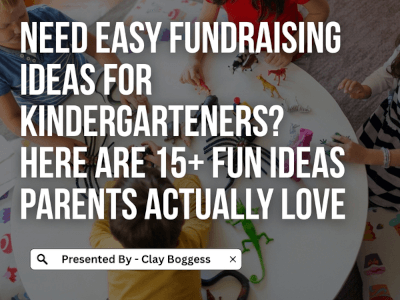
How schools qualify for a big event prize program.
A while back, we were contacted by a school that wanted to use our big event magic show as their prize program for their upcoming fundraiser. Discouragement set in once they learned how much they had to sell to get it for free.
They were a new school in a young and upcoming neighborhood, adding grades each year, so their student population at the time was only about 250. Without pursuing it any further, they moved on. As it turns out, this school had three ways to graduate from a traditional prize plan to a big event fundraising prize program:
1. Achieve a Specific Fundraising Goal
Schools can qualify for a free big event if they reach a predetermined fundraising goal. They make up the difference with our prorated cost-share plan if they fall short. We call this 'Option A'. The closer they reach the goal, the less money they have to pay. Also, if they have to share the cost of bringing in the event, they pay for it from the money already collected from their fundraiser. As a result, they don't have to take the money from another source. Regardless of their sales results, the students that meet their individual sales goals get a big event. Most schools that select this option are confident they'll reach or exceed the goal that earns them a free event based on previous sales with a traditional.
2. Sell Enough to Graduate Up to the Big Event
The second option allows a school to graduate to a big event fundraising prize program after starting on a traditional prize program. This is commonly referred to as 'Option B'. Consequently, they start on a traditional plan, and if their school reaches the level that earns them a free event, they switch. Most schools that choose this route are perhaps less confident they'll reach the goal, so they take a more conservative approach. The downside to this option is that if a school falls short, they settle for the traditional prize program.
3. Get the Big Event No Matter What
The third option is called 'changing your mind'. In other words, a school that initially starts on a traditional incentive plan can switch to a big event prize program, even if they fall short of the sales goal. In other words, it doesn't matter how much they sell. They're still allowed to bring in the event, regardless. They would cost-share based on their sales. This option works well when a school ends up selling more than they expected and realizes they only have to pay out a small amount to bring in the event.
How to Forecast Your Sales Outcome
If you're not sure where your sales will end up, here is a simple way to do the math:
- Multiply the average brochure retail price in the brochure by your number of students.
- Multiply that number by the student goal.
For example, multiplying $12 by 500 students equals $7,500. Then multiply $7,500 by 5, and the result is $37,500.
The individual student goal for a magic or reptile show is five items. The Super and Splash parties require students to sell at least eight items. These calculations will give you a reasonably close estimate. Remember that some students may not sell, while others will reach even higher prizes. You'll also want to avoid comparing previous results to what you think you might sell with a big event incentive plan because they may differ.
Author Bio
Clay Boggess has been designing fundraising programs for schools and various nonprofit organizations throughout the US since 1999. He’s helped administrators, teachers, and outside support entities such as PTAs and PTOs raise millions of dollars. Clay is an owner and partner at Big Fundraising Ideas.



